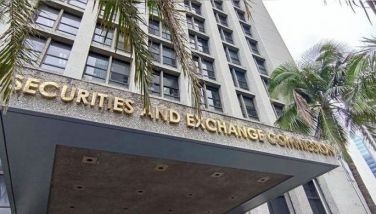Slow Internet?
Neophyte Senator Bam Aquino has called for a Senate hearing to look into the speed of Internet connections in the country, and whether subscribers are getting their money’s worth from the service provided by telecommunications companies. Everyone knows that the advent of Internet technology has made a huge difference in the lives of people because it has made geographical borders virtually nonexistent, making information easily accessible and changing the way we do business.
Senator Bam cited reports claiming that the Philippines has the lowest average Internet speed compared to its neighbors in Southeast Asia. Telco industry insiders, however, point to the contrary, saying the reports claiming we have the lowest average speed and the most expensive rates are untrue and misleading. According to a 2013 study by the UN Economic and Social Commission for Asia and the Pacific (UNESCAP), the Philippines ranked 5th in a field of nine in terms of broadband prices, while in terms of Internet speed, the Philippines was ranked 3rd fastest out of six ASEAN countries according to the State of the Internet report by Akamai, a US-based Internet content delivery network. In that same report, Akamai also noted that the Philippines showed a remarkable 144 percent improvement year-on-year in 2013 in terms of average peak connection speed – the largest increase in the region.
The same source also noted that being an archipelago, the Philippines needs to maintain connectivity via submarine cables, unlike Singapore or South Korea that have concentrated populations in contiguous land masses – which makes it easier to service their Internet requirements. About 90 to 98 percent of the country’s Internet traffic also goes overseas (mainly the US) with every single post or comment on Twitter, Facebook and other social media going all the way to the US first and then back – in contrast to China, Korea or Japan where ratios are reversed and the bulk of the traffic in cyberspace moves within their respective borders, the industry source said. In these Asian countries, the huge bulk of the content being accessed and consumed is local primarily because of language and cultural considerations.
No doubt speed and connectivity are critical in many industries that are dependent on the reliability of information communications technology and the Internet – such as the business process outsourcing sector where the Philippines has become a world leader in the past several years. This has been made possible by a robust and resilient infrastructure provided by Philippine telcos, particularly PLDT. According to the BPO Association of the Philippines, the country has benefited from the availability of multiple domestic transmission networks from different service providers.
Over the years, telcos have invested billions in technology upgrades to improve and expand broadband data networks, enhancing service quality and service capacity for a growing number of subscribers. Globe has allocated P27 billion for capital expenditures this year for the construction of additional cell sites, in building solutions, data network and others. PLDT on the other hand allocated P32 billion this year, with P260 billion invested from 2004 to 2013 for its total capital expenditures covering domestic network enhancements, broadband infrastructure rollout, deployment of its mobile phone networks that required setting up cell sites and other activities to strengthen its mobile and broadband infrastructure.
Unfortunately, only 20 percent of households have laptops or PCs, with only 47 percent of cities and municipalities having access to broadband services. A lot of Filipinos also live in very remote areas which makes it difficult for them to experience the benefits of Internet and broadband access – all of which impact on the quality and the cost of services.
Ongpin wins Sandigan case
The graft case filed before the Sandiganbayan against business tycoon Roberto “Bobby†Ongpin over an alleged P660 million behest loan granted to him by the Development Bank of the Philippines has been dismissed. Ongpin pleaded not guilty to graft charges that stemmed from two alleged behest loans supposedly granted to the businessman to buy DBP’s shares in Philex Mining Corp. – for which his bank accounts were frozen in 2012. Details of the Sandiganbayan decision were not available as of this writing.
Asked for his reaction about the dismissal of the charges, the former Trade Minister said he feels “vindicated,†and that he will continue to do what he does best – doing business deals. According to Ongpin, what is really important is that the decision has restored his belief that justice and the truth will always prevail.
Curvy in, flat out?
Samsung Electronics launched its latest product – the Curved UHD (ultra high definition) television – at the posh Alphaland City Club yesterday. Samsung’s curvy product, which it unveiled in Las Vegas early this year, is starting to become the next sexy attraction as far as TV viewing is concerned, with a lot of interest being generated for the 65-inch and 55-inch units (the more hefty 105-inch UHD curved TV will be made available later this year).
Apparently, Samsung developed the design with the help of psychology experts who aver that curved objects elicit more emotional appeal and are less threatening compared to flat or linear objects. In any case, the curved design makes for optimal picture quality with innovative features like an “auto depth enhancer†that automatically adjusts contrasts and gives an almost 3D-like viewing quality, according to the maker. The Pur Color Technology also makes colors more vibrant with more adjustment options as well. Does this mean curved (TV) are in, and flats are out?
* * *
Email: spybits08@yahoo.com
- Latest
- Trending


























